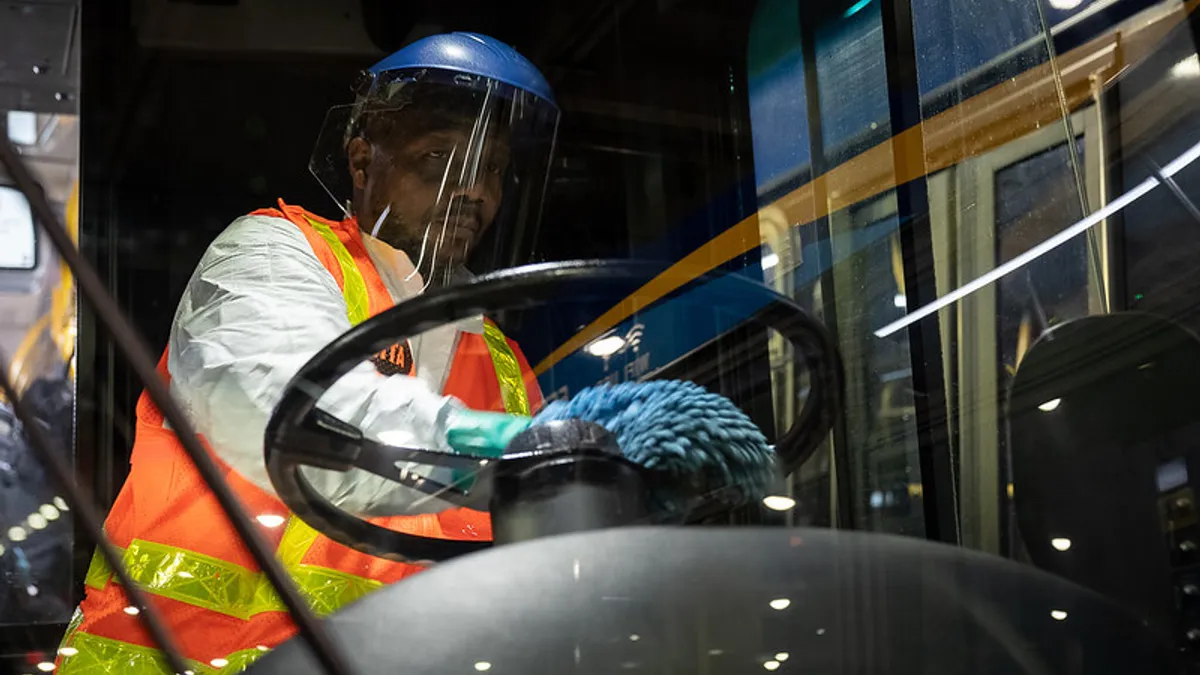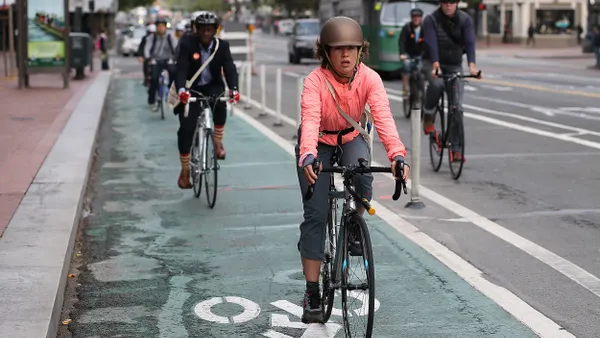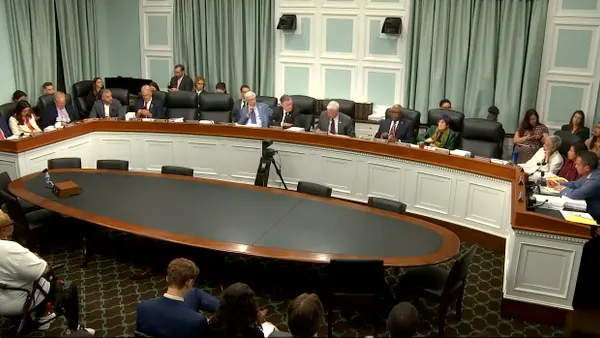Dive Brief:
- Without $12 billion in requested federal COVID-19 relief, New York’s Metropolitan Transportation Authority (MTA) said it would need to cut subway and bus services by up to 40% next year and commuter rail service up to 50%, resulting in longer travel times that could cost riders over $1.7 billion annually, according to new report from the New York University Rudin Center for Transportation and consulting firm Appleseed.
- The MTA would also need to cut 8,000 jobs or about 11% of its workforce to close its anticipated operating budget gap for 2021, resulting in a reduction of almost $1 billion in workers' incomes, according to the report.
- The projected MTA service cuts would hinder the area’s competitiveness as a place for businesses and highly-skilled workers, further hurting the region’s ability to recover from the pandemic, the report found. By 2022, the potential transit service cuts could result in 450,000 jobs lost, in addition to $50 billion in lost earnings and $65 billion slashed from the region’s gross domestic product.
Dive Insight:
Transit agencies nationwide have requested $32 billion in federal relief to mitigate financial damages from the COVID-19 pandemic. If the requested funding is not delivered, riders, transit agencies and regional economies could be drastically affected.
"APTA [American Public Transportation Association] surveys show that six in 10 public transit systems will need to reduce service and furlough employees in the coming months without emergency federal funding from Congress," APTA President and CEO Paul P. Skoutelas said in a statement.
Without $12 billion in federal relief, the MTA would need to cut capital spending and services in such a way that would have severe regional impacts in 2021, according to the report. Reduced capital spending by $4.8 billion below the level previously allotted for 2021, for instance, would result in 23,264 jobs lost.
Those lost jobs would add to the swaths of employment already impacted by the pandemic. New York lost 902,000 private-sector wage and salary jobs from February through April of this year, and while the city gained back 303,000 of those jobs by September, there are signs that the recovery is losing momentum, according to the report.
The anticipated 40%-50% cutbacks to MTA service would also create significant issues to service reliability. The cuts to service would result in crowding; longer loading and unloading times; and conditions where it can become "virtually impossible" to board. Such issues could cut ridership even further, according to the report.
The reduced service would also have a dramatic impact on the economy of the MTA’s 12-county region. A number of industries including construction, sales, healthcare and business would lose 425,000 jobs overall in 2021.
"These findings reinforce the need for maintaining current levels of MTA service and operations as well as capital spending," the report writes. "The damage to the region of the proposed cutbacks in MTA spending would undermine the City’s and the region’s capacity to recover from the economic effects of the pandemic, and seriously harm the capacity of the City and region to retain and attract people and jobs in all sectors of the economy."
The impacts of reduced ridership would also be disproportionately felt by riders who are Black, Indigenous and people of color (BIPOC), according to a recent study by nonprofit AllTransit. That study found that over 2.1 million individuals would lose access to transit if there were 50% cuts to peak service and 30% cuts to off-peak service across nine major cities.
Of those riders, 1.3 million identify as BIPOC, with 65% of BIPOC riders anticipated to lose access to transit in New York.











